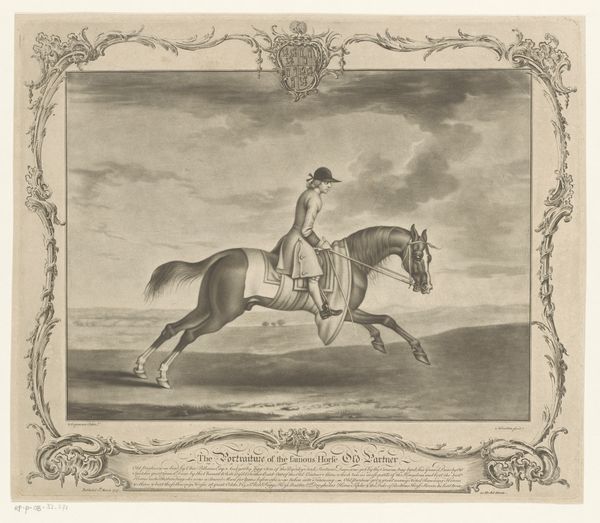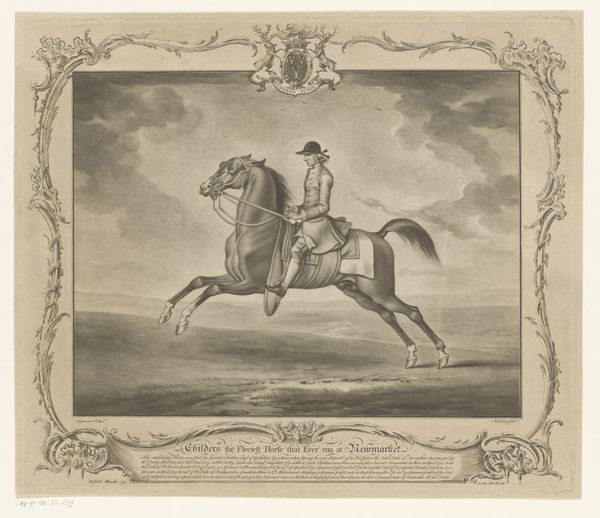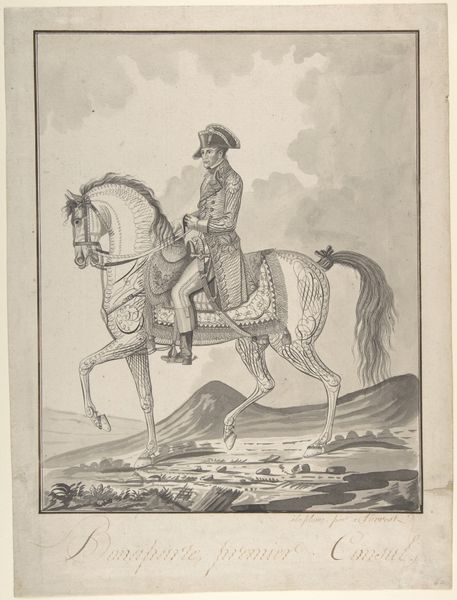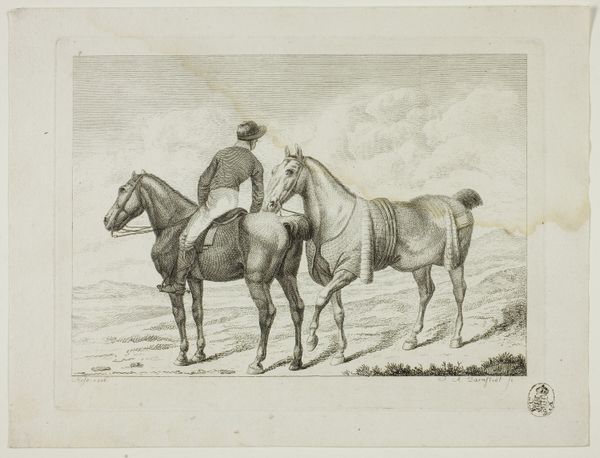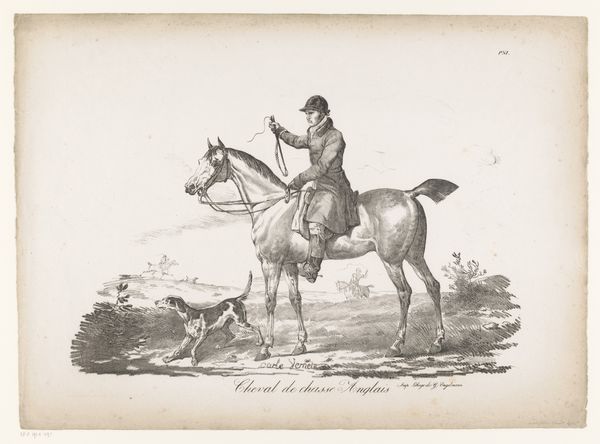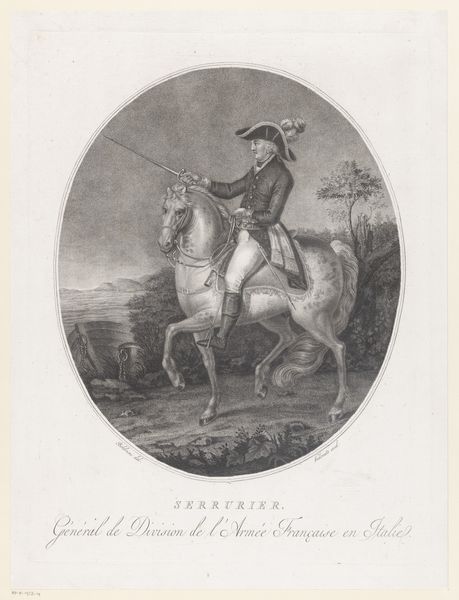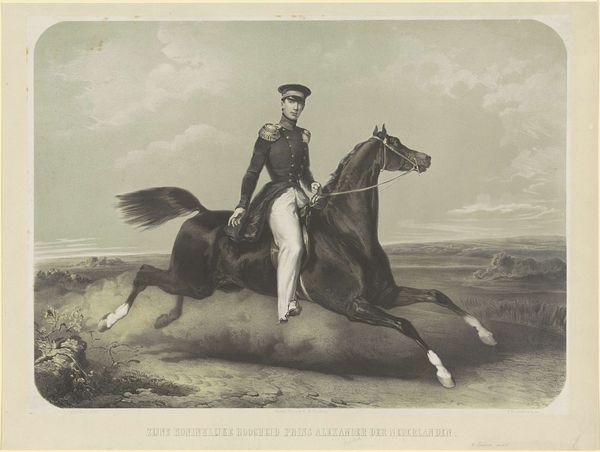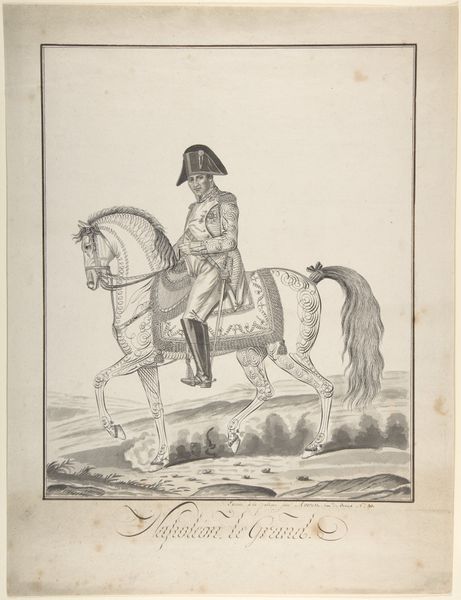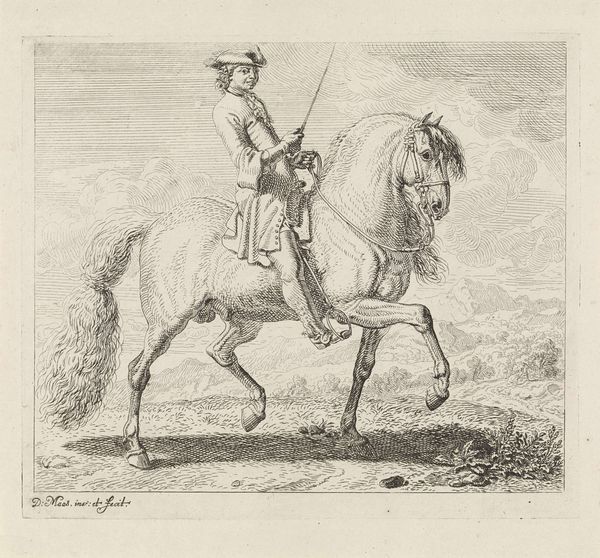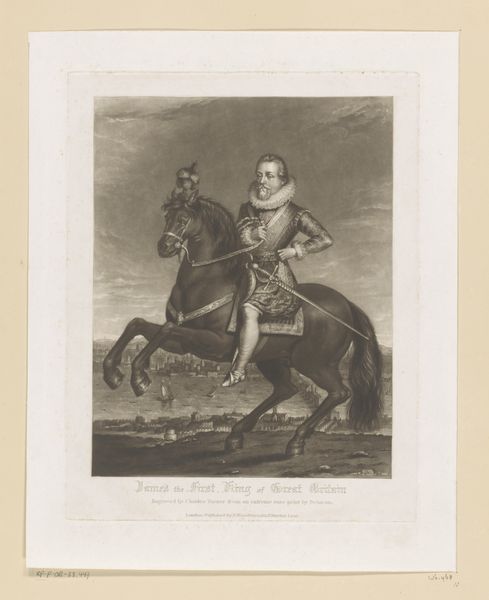
engraving
#
portrait
#
baroque
#
landscape
#
genre-painting
#
engraving
Dimensions: height 300 mm, width 354 mm
Copyright: Rijks Museum: Open Domain
Curator: This is Richard Houston’s "Racehorse with Jockey," an engraving dating back to 1755. It's currently held in the Rijksmuseum collection. Editor: Striking how the ornamental border and meticulously rendered horse seem almost to mirror each other. It’s all about control and prestige, wouldn’t you say? Curator: Indeed. Houston's engraving meticulously replicates painter James Seymour's original work, thereby engaging questions of reproduction and distribution in 18th-century printmaking. Note the emphasis on surface and detail, integral to engravings destined for a consuming public. Editor: The jockey, almost an extension of the horse, suggests a certain subjugation. The artwork hints at narratives of power—both human control over animals, and, I wonder, if deeper readings of class and societal dominance could be teased out from this portrayal of leisure. Curator: Interesting. Consider also the production chain – Seymour's painting is transferred to the copperplate via Houston’s hand. Then think about the printmakers, ink makers, and paper suppliers involved in creating multiple impressions and delivering the work to market. Editor: Precisely, it raises questions about the labor needed to sustain aristocratic lifestyles, indirectly alluded to but visibly absent. Also, the deliberate act of artistic portrayal itself lends legitimacy and permanence to the sitter—in this instance a magnificent animal that’s at once a working participant in these economies of power, and objectified luxury display. Curator: It’s easy to look past such layered material processes in favor of singular artistic authorship, and a vital aspect of artwork like this lies not solely with ‘the artist,’ but with a wider sphere of activity bound by a global market. Editor: Perhaps a telling moment of cultural documentation of status. The Rococo border traps an almost clinical, unsettling portrayal, hinting at inequalities we still grapple with. It’s beautiful and chilling all at once. Curator: Thinking about how a print facilitates dissemination allows us a fresh look at eighteenth-century material culture and distribution models. Thanks for giving me a chance to explore these aspects. Editor: Thanks for shedding light on those material conditions—helps us to see how artworks functioned within specific power dynamics.
Comments
No comments
Be the first to comment and join the conversation on the ultimate creative platform.
